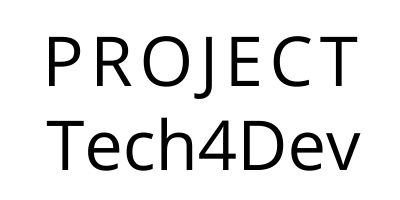In the social sector, technology—when used efficiently—can help organisations learn from the impact of their work and accordingly shift interventions. Through practices such as automating certain processes and routine busywork, they can save resources and more human hours can be spent on community-facing work. Tech can also help in streamlining data collection and impact measurement, which in turn can make reporting to funders—who are also increasingly pushing for tech adoption—easier. However, nonprofits may not always have the time, budgets, know-how, or other resources necessary to answer their tech-related questions.
To understand how nonprofits can think about technology, we spoke with three organisations that work on different thematic areas and have different relationships with tech:
- Farmers for Forests, which aims to increase India’s biodiverse forest cover in collaboration with rural communities.
- SEARCH, a community-based organisation that has been working on healthcare in Maharashtra’s Gadchiroli district for the past 40 years.
- SEEDS, which seeks to build the resilience of communities exposed to disasters and climate change impacts all over India.
Here are some of the questions that these organisations have grappled with, and their means of combating tech-related challenges.
Do I even need tech?
Given how prevalent technology has become, its adoption to at least an extent, such as for digitisation of records, is necessary for some organisations. For others, tech is fundamental to what they do.
Farmers for Forests is an example of the second. The organisation follows a tech-enabled approach towards its work, which includes supporting farmers in transitioning to agroforestry and tapping into the carbon credit market; mitigating human–elephant conflict in Gadchiroli; and mapping land use patterns to plan interventions such as reforestation and prevention of forest fires. Drones are used to measure tree dimensions and monitor tree species, both of which help calculate the amount of carbon sequestered. Drones are also used to spot elephants potentially entering inhabited areas, and then for warning both civilians and the forest department. Finally, the organisation employs satellite data to measure changes in land use patterns.
The organisation’s use of tech is primarily driven by the fact that carbon markets require auditable carbon projects. The monitoring, reporting, and verification does not scale when conducted manually and can be too costly if done only using high-resolution satellite data.
Other organisations may not be using tech to the same extent, but might be relying on some sort of software for human resources processes, project management, or data collection. But even this may not be, strictly speaking, necessary. According to Amrut Bang, joint director at SEARCH, “We’ve been able to do good stuff without too much dependence on any high-tech tools.” Historically, SEARCH’s reliance on technology has been limited. They are now, however, working on creating a participant management system for one of their programmes with the help of Frappe—an open-source software framework that makes building applications easier. They are also experimenting with tools such as Glific, and have been working to transfer their existing data to the cloud.
One of the areas where the question of digitisation and tech use came up for SEARCH was in their intake forms, which are currently paper-based and later entered into a system by two data entry operators. Explaining why digitisation has proven unnecessary for them, Amrut notes, “At our research centre, we have two well-trained data entry operators. So why would we convert to a tablet-based model, when the cost to digitise this process in our area would be higher than hiring and training two individuals in data entry? The quality of our data entry at present is amazing. So why get into something like this?”
SEEDS falls somewhere in the middle of the spectrum. The organisation works on disaster relief and, to provide quick action to affected communities, they also use aerial maps and satellites. Over time, however, they have increased their engagement with tech and are now testing AI-based disaster models to build an index of potential loss from a disaster. They are also attempting to make local communities part of the data architecture by having community members self-report losses at the household level, which feeds into the larger model. Over the course of their work, they too have wrangled with questions around using open-source versus custom-built software.

It is evident then that there is no one-size-fits-all solution when it comes to answering questions such as ‘how much tech does my organisation need?’ or ‘what role should data play in the work my nonprofit does?’ Amrut offers some helpful advice for nonprofits that feel confused, particularly about the latter. “Sometimes organisations just get excited by the prospect of using tech or data. So before committing to any such effort, we like to ask one question: What are we going to use that data for? Till the time we don’t come up with some useful questions that we would like to answer with that data, we don’t want to get into it.”
Should I build or buy?
There is a range of tools—from free to freemium and paid software—available for every conceivable task. Whether an organisation should build or buy depends on what they’re going to use the product for. And even within the same organisation, there can be some processes that require building something from scratch versus others where existing software can work.
Krutika Ravishankar, co-founder of Farmers for Forests, shares that they consulted with Thomas Mampilly from the Project Tech4Dev team about whether to build or buy. At this time, they were planning to use existing open-source or commercially available software such as Zoho for a lot of the project management and HR operations. However, Thomas urged them to leverage open-source software such as Avni to connect with the farmers. While the organisation is currently running a small pilot to test the effectiveness of the software, it is continuing to use the in-house software for the bulk of its field operations because even though it is not perfect, the field teams are well versed with it. So, organisations need to consider what the trade-offs might be, and it’s important to keep in mind who’s using the final product.
For SEEDS, budget was an important consideration when deciding whether to build or buy. Manu Gupta, co-founder of SEEDS, shares, “Given that SEEDS cannot make a multi-year, multi-crore kind of investment that a large corporation can, we will always be doing this incrementally.” This constraint shaped their technology strategy significantly. Instead of aiming for a large-scale, all-at-once system overhaul, they looked at using an open-source platform that could be rolled out quickly and then extended over time as requirements become clearer and more well defined.
Do I need AI?
The growing conversation around AI means that most organisations are curious, if not eager, about incorporating it. As more organisations adopt an AI-enabled approach, those who don’t are under the risk of being behind the curve. However, those who do leverage it can face the expectation of scaling faster and operating with leaner teams.
For SEARCH, which works in resource-poor Gadchiroli with marginalised rural communities, technology has never been a straightforward matter. Amrut says, “We have long thought about what it means to roll out technology in a setting like ours.” When it comes to AI, the organisation was clear that it would rather use AI for experiments that were otherwise unfeasible and also help people work more efficiently.
Amrut also shares that they did not want to use AI to replace human labour. “Instead, we want to use AI to empower human beings.” The organisation also hopes to address existing care gaps in mental healthcare through AI. Dr Ojas Krishnani, research associate and medical officer at SEARCH, adds, “For every 100 people who need some form of support, maybe 15 actually end up receiving it. With the help of AI, humans can be trained to bridge this gap.”
SEEDS follows a similar approach, where AI takes on an enabling role. Manu shares that for their disaster preparedness, they used AI to help develop an index of potential loss due to a disaster. “We started with observation data from satellite imagery and maps and then identified the most vulnerable within the larger areas that were impacted by disasters.” They’re also working towards enabling community members to self-report losses, which further feeds into their disaster data modelling.
Should I invest in tech leadership?
Farmers for Forests had a very clear idea of the kind of tech it needed and also had the personnel to use this tech—boasting of a tech team of seven in an organisation of 70–80 people. Krutika shares, “For us, it was a question of working with 20,000 farmers but needing to get to 1,00,000.” Pointing out that data is easy to manage when there are fewer people, she notes, “The real challenge is when you have hundreds of thousands of different variables. Then you start thinking about how you can design your back-end architecture to store this data. This requires somebody with experience, who’s able to think a little bit at a systems level.” This prompted them to reach out to Project Tech4Dev’s Fractional CxO programme, which integrates experienced technology professionals into nonprofits for a duration of three to 12 months to help the organisation plan around tech.
Another reason for investing in tech leadership could be to provide leadership to a fragmented tech team. Krutika shares, “All of the people in our data team had previously worked in the private sector, in organisations where they were only focusing on one aspect of data collection, and in contexts where they did not need to know what the entire data team was doing. But we wanted to change this.” Tech leadership can also bring in coherence to the tech products being built by the team by helping them think through certain questions—including why we are building this, who we are building it for, and what it would look like—and putting in place tech processes.
For some organisations, it might make sense to engage tech leadership if they work in contexts where their exposure to technology is limited. In resource-poor areas and organisations working with marginalised communities, there is some urgency in learning about tech at the very least. Though, of course, there is rarely funding for this. Amrut shares, “We utilised our brief stint with tech leadership to venture into some areas where we needed good advice, because being in a place like Gadchiroli often also means that we’re using practices that may not be so technically up to date.”
The key is to spend a lot of time understanding your own tech needs before collaborating with an external partner. While it may not always be possible, potential tech partners should also learn as much about the organisation as they can. Krutika shares, “The fCxO spent a lot of time understanding who we were, what exactly our tech issues were, and what level of stage or technology we were at.” They had four or five conversations before they decided to come on board.
Given that tech requires funding, which can be challenging to secure, Manu points out that having someone with tech experience, even if briefly, can help nonprofits think through interventions and approaches without having to fully invest in building large internal systems. “Having a fractional chief technology officer (CTO) to start with may be a good idea if you are unsure whether or not to go ahead with a particular kind of resource. If you start with a trusted adviser, you are also able to articulate better what your needs are, and then those become the basis of going in for tech adoption.
—
Know more
- Read this article to learn more about how leaders should approach tech at their organisations.
- Read this article on building a technology team at nonprofits.
Do more
Read this blog to learn whether your organisation can benefit from having a fractional CTO.







